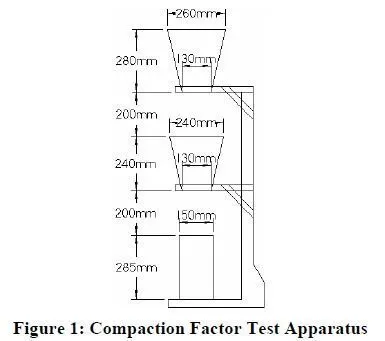Due to the wide use of vibration in placing concrete, many test methods measure the flow of concrete under vibration. Vibration test methods typically feature free or confined flow.
Vibration test methods are generally simple to perform; however, none has been widely
accepted. Although vibration test methods can be used for a wide range of workability, they are most appropriate for low and moderate slump concretes that are commonly vibrated in the field.
Additionally, it should be noted that some rotational rheometers are capable of measuring the rheology of concrete under vibration.
In evaluating the results of vibration test methods, it is important to recognize the role of several vibration parameters in influencing the flow properties of concrete. It has been experimentally established (Tattersall and Baker 1989; Banfill, Yongmo, and Domone 1999) that vibration alters the Bingham parameters of concrete. The flow properties of vibrated concrete are related not just to the flow properties of the unvibrated concrete but also to the nature of the applied vibration. Banfill, Yongmo, and Domone (1999) has shown that the flow of concrete under vibration is most significantly influenced by the velocity of the vibration. When the velocity of vibration is above a minimum threshold value, concrete can be considered a Newtonian fluid, at least for low shear rates. Based on this information, the results obtained from the same test method but with different types of vibration should generally not be directly compared. Since most test methods in this document have not been standardized, they do not have one single specified type of vibration. Ideally, the vibration applied by the test should closely match the vibration applied in the field.
